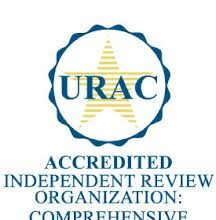Reducing readmissions is becoming increasingly important for hospitals. In the olden days (and still to some extent now) a readmission was simply a new opportunity to earn revenue on the same patient. But as payment models evolve toward refusing payment for preventable readmissions and as readmission rates are used as publicly reported quality measures, this is changing.
Reducing readmissions is becoming increasingly important for hospitals. In the olden days (and still to some extent now) a readmission was simply a new opportunity to earn revenue on the same patient. But as payment models evolve toward refusing payment for preventable readmissions and as readmission rates are used as publicly reported quality measures, this is changing.
Today’s Hospitalist has a fascinating article on the topic: Think you can predict readmissions? Thing again; Doctors are clueless when it comes to guessing which patients will bounce back. It reports on a Journal of General Internal Medicine paper (Inability of Providers to Predict Unplanned Readmissions) that documents attempts to improve on readmission prediction models. The authors’ hypothesis was that physicians, case managers and nurses would take into account a wider array of factors, e.g., socieconomics, health literacy, unmeasured clinical variables –compared with the fairly simplistic and modestly accurate algorithms in place today.
As the authors demonstrated, the experts were even worse than the model at predicting who would bounce back, and were completely useless in predicting the reasons that specific patients would be readmitted. The study brings to mind some interesting points:
- Since no one can tell who will be readmitted, programs that focus on patients that are supposedly high-risk are unlikely to be successful
- If no one can predict who’s coming back, perhaps the causes of readmission are not the specific patient’s situation but more systemic factors related to how the hospital is run
- At least in the institution profiled in the study, no one seems to be closing the loop on who’s readmitted and why. Therefore there is no learning opportunity for doctors, nurses, and case managers. I raised this point in my podcast interview yesterday with Paul Brient, who replied that PatientKeeper helps to address this problem
Perhaps the most important line in the whole paper is the following:
All groups underestimated the degree to which patients would be readmitted for adverse effects of therapy
From a patient perspective, this is a critical finding and reinforces my skepticism of clinical practice patterns in the US. Physicians hear so much about what works –often directly from drug or device companies and if not then indirectly– which tends to create a bias toward prescribing these therapies. When patients don’t follow their therapies the medical profession often couches the issue in terms of patient “compliance” or “adherence” whereas the problem may be the therapy rather than the patient. It would be very good for providers to get feedback on this topic, both at the level of specific patients as well as through broader studies.








